#macroderma
Text

A ghost bat (Macroderma gigas) in Katherine, Northern Territory, Australia
by Tim Bawden
#ghost bat#bats#macroderma gigas#macroderma#Megadermatidae#chiroptera#mammalia#chordata#wildlife: australia
62 notes
·
View notes
Photo
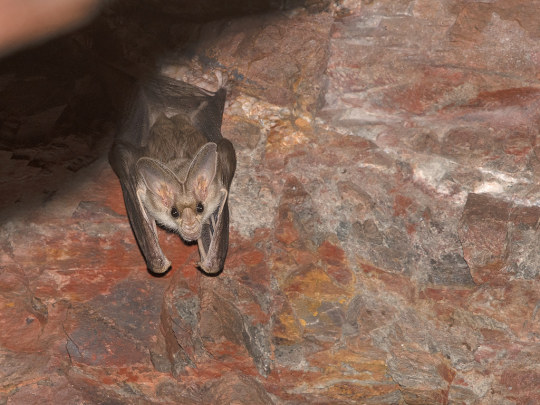
Ghost bat (Macroderma gigas) in the Northern Territory of Australia
Tim Bawden
573 notes
·
View notes
Photo

Ghost Bat - Macroderma gigas, Northern Territory
Photographer: Jasmine Vink
#jasmine vink#photographer#australian geographic#ghost bat#macroderma gigas#bat#animal#mammal#wildlife#northern territory#australia#nature
192 notes
·
View notes
Text




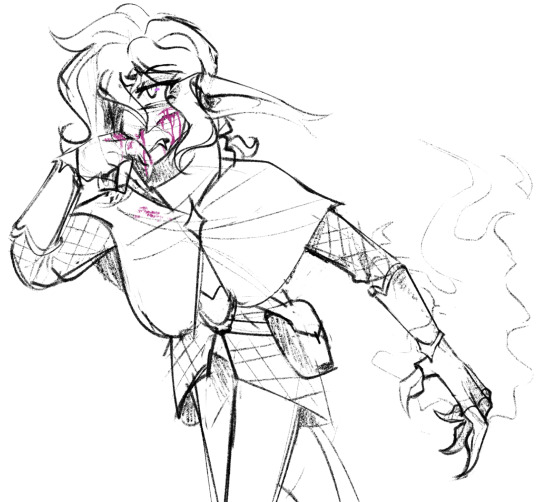

Dump of some semi-recent doodles I don't think I ever posted to tumblr. Also they have a tail poof now
If I never mentioned that they got turned into a vampire spawn on here then... here's the first mention
#dnd#dungeons and dragons#tabletop#original character#changeling#artificer#druid#oc#dnd oc#dnd art#ttrpg#bat#my ocs#my art#Illia Winters#blood cw#the flowers in their hair in the pencil-y doodle are spider lily lilacs and forget-me-not. they have symbolic purpose#bat illia is based loosely on the ghost bat (Macroderma gigas)
13 notes
·
View notes
Photo
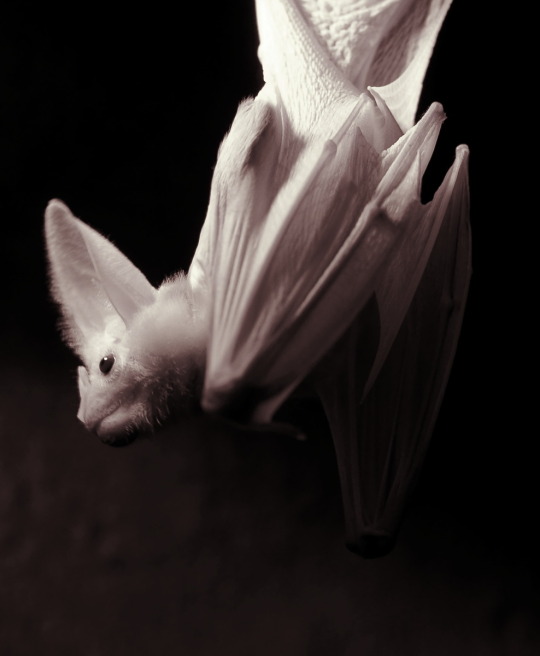
Ghost Bat at Perth Zoo, ph by S J Bennet
8 notes
·
View notes
Text


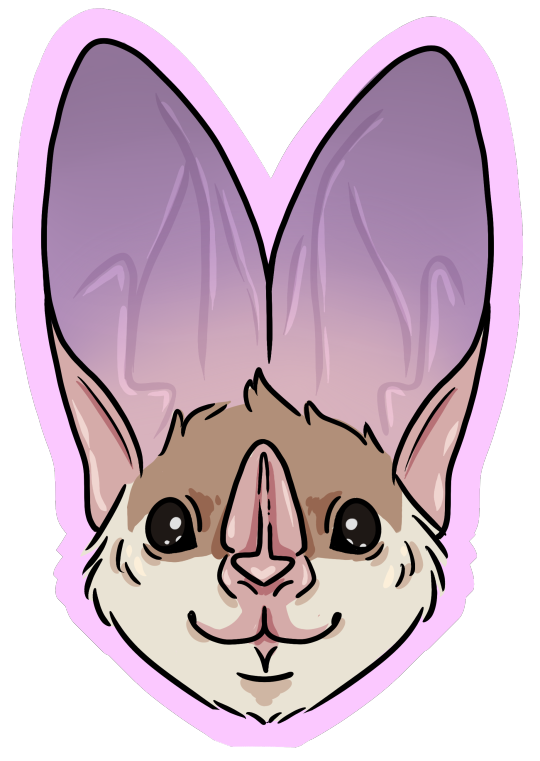
The Australian Ghost bat (Macroderma gigas) is the country's largest microbat and the second largest globally. These bats are the only carnivorous bats in Australia, hence one of their common names the False Vampire. However, they do not drink blood, instead, they specialise in consuming insects, frogs, birds, lizards, and small mammals such as other bat species (such as the Bentwing, Horseshoe, Leafnosed, Little Cave Bat, and many species of the Sheath-tailed bats)
SIZE: The Ghost bat is 10 – 13cm long, has a wingspan of 500 mm, and weighs 130 – 170 grams.
LOCATION: They are found in tropical northern Australia, primarily in the Northern Pilbara and Kimberly regions in Western Australia. Northernmost areas of Northern Territory, and from Cairnes to Mount Etna in Queensland.
THREATS: Man-made: barbed wire fences, tree clearings, loss of old mines and caves, climate change, and tourism
Natural: wildfires, quolls, dingoes, and pythons
DEVELOPMENT: Once mating is complete, the sexes will separate themselves into gender-specific colonies. The females will form maternity groups of up to 1000 bats during the winter months to maintain body temperature as they naturally run quite low. A mother will birth one pup per year, taking three months to gestate. The pup will suckle milk for four weeks from the armpit and once they reach seven weeks, they will start learning how to fly and hunt. Weaning ends at 3 months, where the pups are now able to fly independently and they will reach sexual maturity for females at a year, whereas males will reach it at two years of age. The lifespan of wild Ghost bats is unknown, however, in captivity, they will live for approx. 8 – 13 years, the oldest being 20 years.
#artists on tumblr#art business#small business#australian artist#making stickers#zoology#biology#zoology stickers#Macroderma gigas#microbat#microbat stickers#false vampire bat#australian ghost bat#ghost bat#ghost bat stickers#education with stickers#etsy artist#etsy store#ko fi shop#link in bio#learn with me
15 notes
·
View notes
Note
Thoughts or opinions on ghost bats? :3 I found a really old Google doc where I'd put some stuff up to remember them and I had ghost bat's so apparently I found em that cool hehe
there are 2 ✌️ ghost bats and i love both pf them!!!! the northern ghost bat (diclidurus albus) is SO cute i love his little face. he literally looks like he has never had a thought. the ghost bat (macroderma gigas) is EPIC and I LOVE HIM ♥️♥️♥️I am blowing a kiss 2 all carnivorous bats rn


(you can probably figure out which one is which)
#i actually have a character in chiropteryx whos a ghost bat (macroderma gigas).... hehhe#zin speaks#bats
5 notes
·
View notes
Text
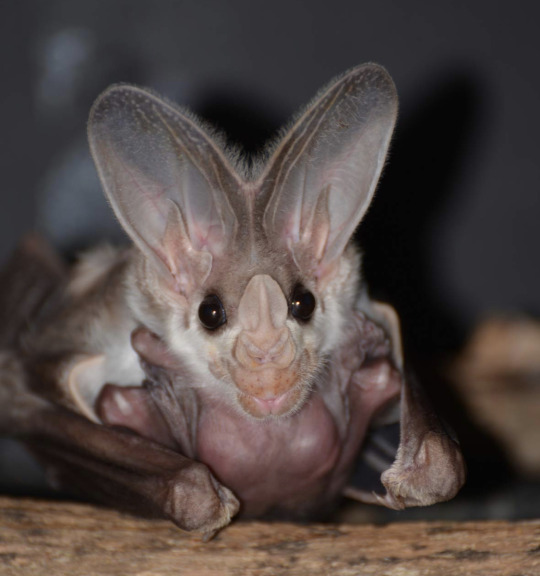
u hate ghost bat? eep eep?
2 notes
·
View notes
Photo

👻Boo! Say “hi” to the ghost bat (Macroderma gigas). 🦇This critter’s name is a nod to the pale color of its fur. The Australian species lives in a range of habitats such as rainforests, tropical savannas, mangroves, and woodlands. It has a varied diet, preying on reptiles, large insects, small mammals, birds, and frogs. When on the hunt, the carnivore swoops down from above, wraps its meal in its wings, and then bites down on the head and neck. Photo: S J Bennett, CC BY 2.0, flickr #AnimalFacts #bats #dyk #GhostBat #nature #SpookySeason https://www.instagram.com/p/CkUPQPXrP8b/?igshid=NGJjMDIxMWI=
754 notes
·
View notes
Note
Any specific bat species recommendations for a sona (because I have no idea what to do lol)
Depends what you're going for! If you're looking for cute then you can't go wrong with a flying fox (I'd pick one with some colour variation, lots of them have orange ruffs, so maybe a Ryuku flying fox or a Specatcled flying fox), if you're going for the sort of classic bat look then a long-eared bat of some kind is a good shout (my own fursona is a grey long-ear and dragon hybrid), if you're going for max cool then you could go for a species of vampire bat, and if you want fun colours then maybe a painted bat, a badger bat, or a honduran white! Even then there's a bazillion different types all of which are brilliant choices :)
In fact here's some anthro bats I've drawn if you want some examples, they're under the cut and there's a blood warning for the last one.
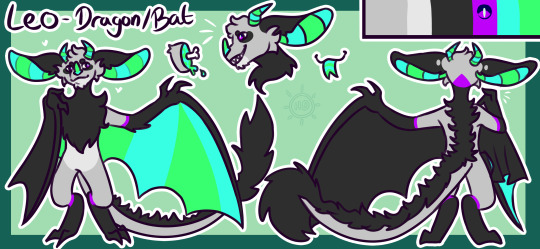
My own boy Leo (grey long eared bat/dragon hybrid, although i designed him a while ago so he's not as accurate to an actual bat as he could be)

Here's an anthro astarion I drew (Ghost bat) (as in Macroderma gigas)
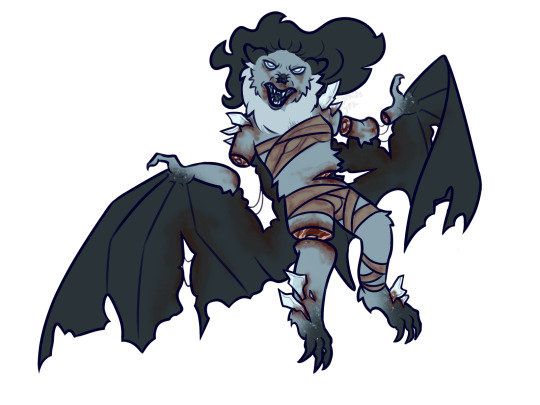
And here's the Spirit dbd as a furry (Ryuku flying fox). Honestly I'm the world's biggest Yangochiroptera fan but Yinpterochiroptera make GREAT anthros imo.
#A bumblebee bat would also be a cute sona#It's occured to me this probably isn't super useful because i am covinced you could make ANY bat work as a sona#lol sorry and best of luck!!#ask#unnamedboxvoid#not bats
11 notes
·
View notes
Photo
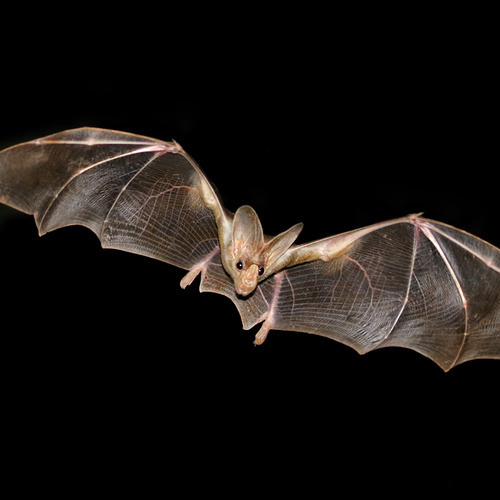
Ghost Bat (Macroderma gigas)
Family: False Vampire Bat family (Megadermatidae)
IUCN Conservation Status: Vulnerable
Most bat species feed either on small, flying insects or on the fruits of trees, but this relatively large microbat, named for its pale coloration, is unusual in that it feeds largely on vertebrates (mainly birds, lizards, frogs and small mammals, including smaller bats.) Found in scattered populations across northern Australia, Ghost Bats spend the day roosting in small colonies within caves, mines and cavities in rocks, and emerge at night to hunt (typically in wooded areas, ranging from arid woodlands to rainforests.) They hunt in a manner more akin to an owl than to a typical predatory bat: after arriving at a suitable hunting site they position themselves on an elevated tree branch and wait for signs of prey, which they detect using echolocation, an acute sense of hearing and sensitive eyes. They subdue their prey with their teeth; airborne prey (which may be as large as Bar-Shouldered Doves, which are only slightly smaller than a Feral Pigeon) is brought to the ground by a series of powerful bites to the head and neck, while terrestrial animals are pinned to the ground by a specialized claw on the bat’s thumb and then torn apart by its jaws. As they typically breed deep in caves almost nothing is known about the reproduction of this species except for the fact that they typically produce only a single pup at a time, and that said pup clings to its mother constantly until it is mature enough to hunt on its own - when its mother flies, the pup is able to ride on her belly by clinging onto her fur as well as one of a pair of non-functional “false nipples” that seem to serve the sole purpose of allowing the pup to maintain its grip. The Ghost Bat is threatened by the destruction of roosting sites used by colonies, and by the abandoning of otherwise suitable roosting sites following disturbances by human activity (it has been reported that after being scared away from a roosting site members of this species may not return for months or even years, and without a safe roosting site they are vulnerable to predation during that day.) One of the largest and most important colonies of Ghost Bats is found in the Mount Etna Caves National Park in eastern Queensland.
-----------------------------------------------------------------------------
Image Source:https://www.inaturalist.org/taxa/41326-Macroderma-gigas
Happy Halloween!
#ghost bat#australian false vampire bat#bats#bat#microbat#microbats#chiroptera#megadermatidae#mammal#mammals#mammalogy#zoology#biology#chiropterology#wildlife#australian wildlife#Happy Halloween!#tw bat#tw bats#animal#animals#australian animals#australian animal
178 notes
·
View notes
Text

Grzimek's Animal Life Encyclopedia, vol. 11, Mammals II. 1972.
1.) Greater bulldog bat (Noctilio leporinus)
2.) Ghost bat (Macroderma gigas)
3.) Yellow-winged bat (Lavia frons)
4.) Greater false vampire bat (Lyroderma lyra)
5.) Egyptian slit-faced bat (Nycteris thebaica)
6.) Hildebrandt's horseshoe bat (Rhinolophus hildebrandtii)
#bats#greater bulldog bat#ghost bat#yellow-winged bat#greater false vampire bat#egyptian slit-faced bat#Hildebrandt's horseshoe bat
212 notes
·
View notes
Text
Hoary bat (Lasiurus cinereus)
These attractive bats live throughout N. America and migrate to S. America in the winter. They are the largest bat found in Canada, and one of the few bats who give birth to twins!
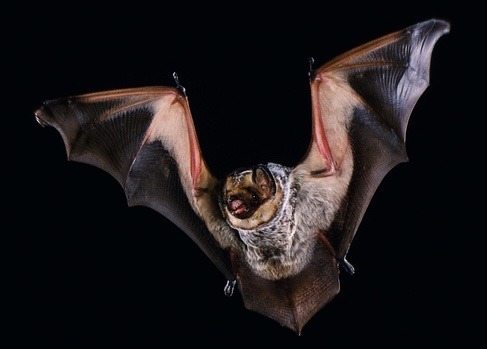
Ghost bat (Macroderma gigas)
These Australian bats are unique in that they are one of the few fully carnivorous bats, who are even cannibalistic! They detect prey from a perch, then ambush it. They eat birds, small mammals, and reptiles. If you’re ever in Australia, keep your eye out!
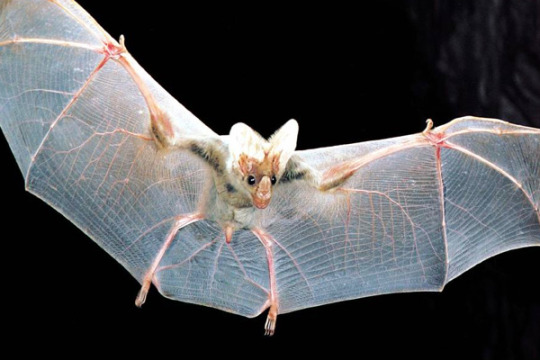
Allen’s long eared bat (Idionycteris phyllotis)
These bats have extraordinarily big ears! They live through the south of North America, and have very distinct echolocation calls; rather than individual clicks, they use a long, drawn out call.

Honduran white bat (Ectophylla alba)
You know ‘em, you love ‘em! These adorable bats are found through Central America. They create tents by chewing along the spine of leaves, and live in these tiny homes! Their colouration is a form of camouflage, as it reflects the green when the sun shines through leaves.

Pallid bat (Antrozous pallidus)
These bats, known for their big smiles, are quite remarkable! They feed on scorpions, specifically the most venomous scorpion in N. America, and are resistant to the stings! They are also known to not use echolocation to hunt, and instead listen for movement.

Painted bat (Kerivoula picta)
A beautiful creature, no? These lovely bats are found around South Asia, and their fur has inspired the name butterfly bat in some languages. The bright colouring allows them to look similar to dead, curled-up leaves while roosting, but it also makes them perfect for Halloween!
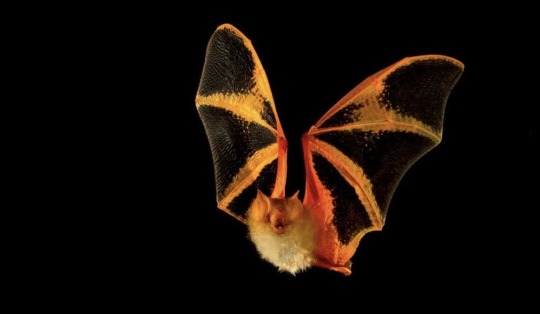
29 notes
·
View notes
Photo
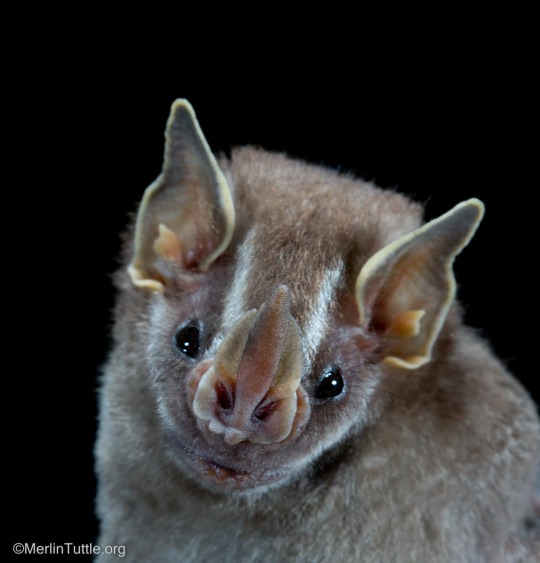
A pygmy fruit-eating bat (Artibeus phaeotis) in Panama.
Sweet Bat Portraits Dispel Stereotypes of These Incredibly Important Mammals
Photographer: Dr. Merlin Tuttle

The Cuban flower bat (Phyllonycteris poeyi), Phyllonycteris poeyi, is endemic to Cuba. It forms large colonies in caves with up to a million or more in single caves. These bats feed on nectar, pollen, fruit and insects.

An adult female dwarf bonneted bat (Eumops bonariensis) from Venezuela.
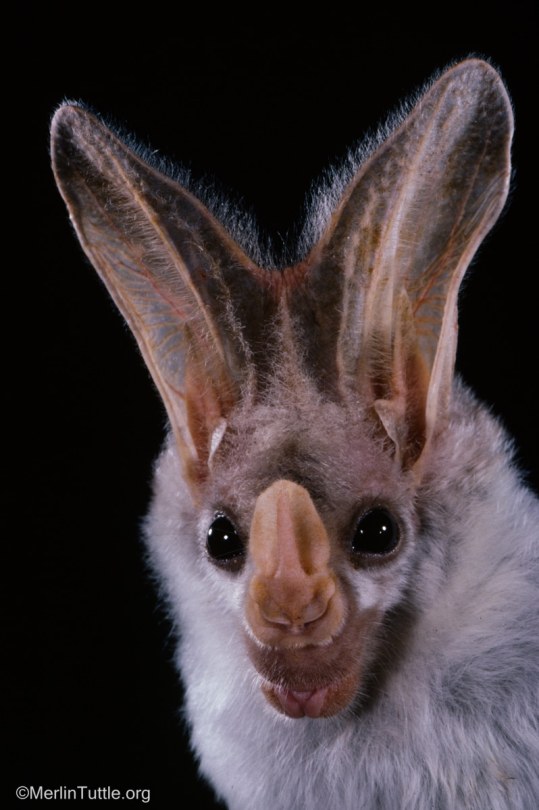
A portrait of a ghost bat (Macroderma gigas) in Australia in 1998.
#merlin tuttle#photographer#pygmy fruit-eating bat#bat#mammal#animal#wildlife#artibeus phaeotis#panama#nature#cuban flower bat#phyllonycteris poeyi#cuba#dwarf bonnet bat#eumops bonariensis#venezuela#ghost bat#macroderma gigas#australia
99 notes
·
View notes
Note
top five bats and/or bugs?
for now i'll just do TOP FIVE BATS (but actually more just top five favourite bats):
the hairy-legged vampire bat (Diphylla ecaudata) - is this an obvious choice? maybe but look they're just such little guys...., so round! so fluffy! to hold any bat with my bare hands would be a bad idea but sometimes i do wonder what it'd be like to just. hold one. just a magically calm non-disease-carrying not-scared vampire bat to hold in my hand. anyway no list like this would ever be complete without at least one vampire bat
the trumpet-nosed bat (Musonycteris harrisoni) - another example of 'it'd be such a bad idea with a real bat but imagine if you could just hold it in your hand'. also, long snout! so long... so weirdly proportioned compared to their body... little guys
the ghost bat (Macroderma gigas) - another simple but cute little guy! they have such big ears.... and apparently some of their noises are audible to humans and can sound like birds or crickets! but i mostly think they're just a Good Example of a Bat
the wrinkle-faced bat (Centurio senex) - and another weird little critter! this little guy not only has plenty of wrinkles, but also males have. skin masks. masks of their skin. it's a sort of furry flap of skin on their neck that they can pull over the lower part of their face, it's just! a skin mask! they have that! i think they're a great example of the weirdness of bats (and the weirdness of their skin sometimes, there are loads of other bats with weird skin flaps/frills/etc.)
the spectacled flying fox (Pteropus conspicillatus) - might be another obvious choice but, along with being big fluffy bats, i also think their face patterns are very cute ∑8> like yeah! those sure are spectacles!
6 notes
·
View notes
Photo
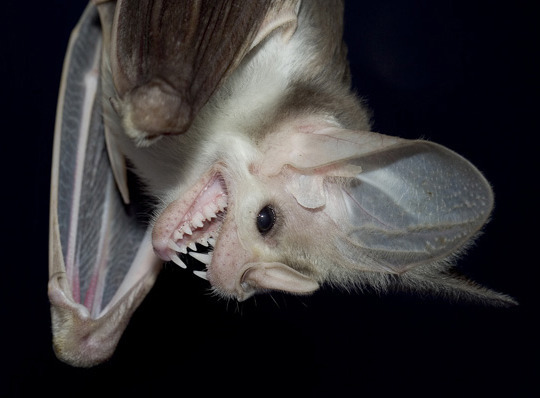
The ghost bat (Macroderma gigas)
4 notes
·
View notes